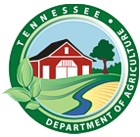 Nashville, TN – Burning firewood is a good option to keep your home warm through the winter months. The Tennessee Department of Agriculture advises consumers to consider the type of wood, its origin and quantity before making that purchase.
Nashville, TN – Burning firewood is a good option to keep your home warm through the winter months. The Tennessee Department of Agriculture advises consumers to consider the type of wood, its origin and quantity before making that purchase.
“Firewood is sold all over the state by vendors operating at varying levels – from large-volume vendors selling to commercial retailers like grocery and convenience stores, to smaller mom and pop operations selling firewood along the roadside,” said Jere Jeter, State Forester and Assistant Commissioner of the Tennessee Department of Agriculture Division of Forestry.
“It is in the consumers’ best interest to educate themselves to make sure they get the best product for their money,” stated Jeter.Wood varieties burn differently and produce differing amounts of heat. For example, oak burns more slowly and produces less smoke compared to pine. Determine the type of wood that will best serve your needs.
Ask retailers about the seasoning of the wood. Seasoning is the process by which wood is dried and typically takes nine months. Firewood that has not been properly seasoned will produce less heat, may burn poorly and create unnecessary soot and smoke. Soot buildup over time in chimney flues can create a fire hazard, so inspect your chimney at least once a year to be safe.
Consider the origin of the wood. Wood from other states may transport invasive insects into Tennessee. Likewise, wood from some regions of the state may already be infested, and moving that wood can allow the damaging insect or disease populations to spread. Consumers can help avoid potential problems by purchasing firewood that was harvested near where it will be burned.
“The Emerald Ash Borer and Thousand Cankers Disease are two examples of invasives that have devastated many native hardwood trees in the U.S. as a result of the transportation of infested wood products,” Jeter said. “We continue to survey for both EAB and TCD since their discovery in Tennessee. We want to encourage all consumers to help slow the spread of invasive insects and diseases that affect the health of our forests. Simply put, obey firewood quarantines and buy where you will burn.”
The last factor to consider when buying firewood is the quantity. Firewood has its own unit of measurement called a cord. Firewood must be sold by the cord or fractions starting at 1/8 of a cord. A cord of wood by law must equal 128 cubic feet. Be wary of terms such as face cord, rack, rick, tier, pile or truck-load, as these terms are not standardized in the sale of firewood. A typical pick-up truck cannot hold a cord of firewood.
If consumers follow these tips, they can feel confident that they purchased a local, worthy product that will keep them warm throughout the winter months.
For more information on EAB and TCD and state quarantines, visit http://protecttnforests.org/
For more information on the TDA’s Weights & Measures Section, visit http://www.tn.gov/agriculture/regulatory/weightsandmeasures.shtml


